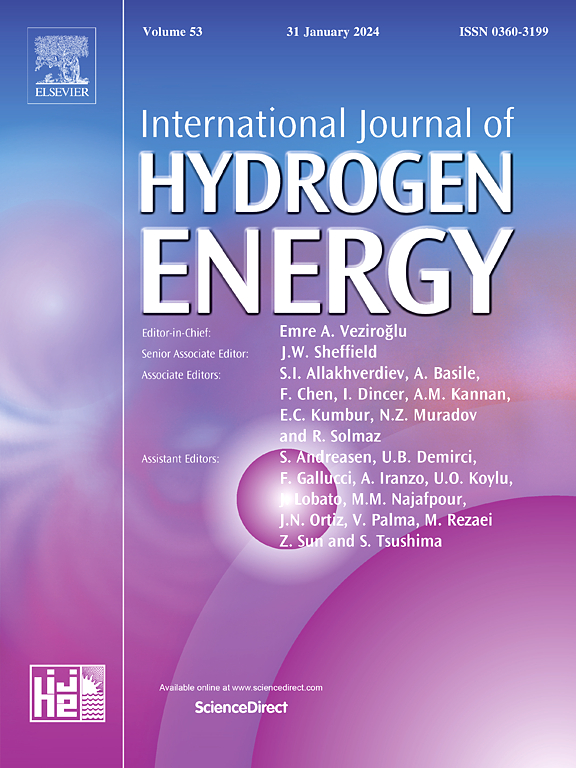用中子射线照相技术研究零间隙碱性电解池的两相流动行为
IF 8.1
2区 工程技术
Q1 CHEMISTRY, PHYSICAL
引用次数: 0
摘要
利用中子显影技术研究了零间隙碱性电解槽内的两相流动特性。电池是用高浓度氢氧化钾溶液操作的。在不同的电解质体积流量、电流密度和温度下评估两相流。确定了平行流动通道内的气体量,并根据不同的操作条件评估了通道长度和时间上的气泡速度。气泡运动需要高度的时间分辨率。在Laue Langevin研究所,使用世界上最强大的中子源提供的NeXT(中子和x射线断层成像)中子成像仪实现了50 fps的高帧率。本研究证明了高时间和空间分辨率的中子成像技术对电化学流动电池中两相流研究的重要性和局限性。本文章由计算机程序翻译,如有差异,请以英文原文为准。
Operando investigation of the two-phase flow behavior of a zero-gap alkaline electrolysis cell using neutron radiography
The two-phase flow behavior inside a zero-gap alkaline electrolysis cell is investigated using operando neutron radiography. The cell was operated with a highly concentrated potassium hydroxide solution. The two-phase flow is evaluated at different electrolyte volume flows, current densities, and temperatures. The amount of gas inside the parallel flow channels is identified and the gas bubble velocity over the channel’s length and time is evaluated depending on the different operating conditions. The gas bubble motion requires a high degree of temporal resolution. At the Institut Laue Langevin, a high frame rate of 50 fps was achieved using the NeXT (Neutron and X-Ray Tomograph) neutron imaging instrument, which is fed by the world’s most powerful neutron source. This study demonstrates the importance and limitations of high temporal and spatial resolution in neutron radiography for the investigation of two-phase flow in electrochemical flow cells.
求助全文
通过发布文献求助,成功后即可免费获取论文全文。
去求助
来源期刊

International Journal of Hydrogen Energy
工程技术-环境科学
CiteScore
13.50
自引率
25.00%
发文量
3502
审稿时长
60 days
期刊介绍:
The objective of the International Journal of Hydrogen Energy is to facilitate the exchange of new ideas, technological advancements, and research findings in the field of Hydrogen Energy among scientists and engineers worldwide. This journal showcases original research, both analytical and experimental, covering various aspects of Hydrogen Energy. These include production, storage, transmission, utilization, enabling technologies, environmental impact, economic considerations, and global perspectives on hydrogen and its carriers such as NH3, CH4, alcohols, etc.
The utilization aspect encompasses various methods such as thermochemical (combustion), photochemical, electrochemical (fuel cells), and nuclear conversion of hydrogen, hydrogen isotopes, and hydrogen carriers into thermal, mechanical, and electrical energies. The applications of these energies can be found in transportation (including aerospace), industrial, commercial, and residential sectors.
 求助内容:
求助内容: 应助结果提醒方式:
应助结果提醒方式:


